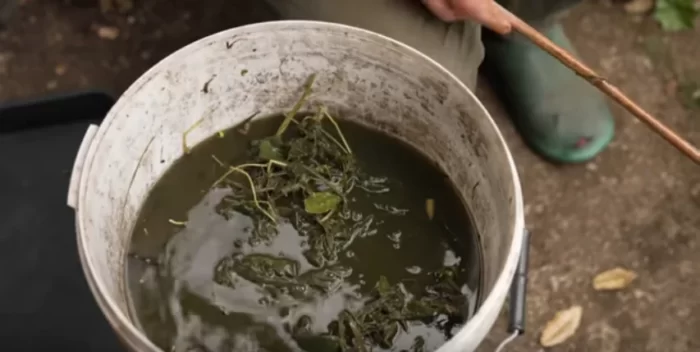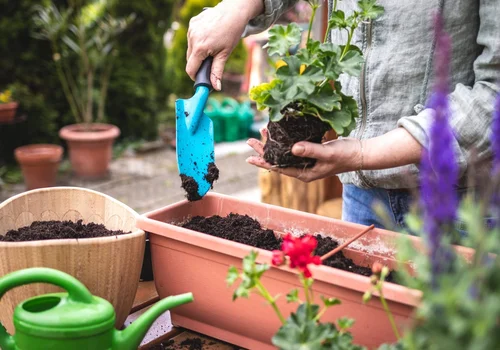Weeds are often viewed as a nuisance in the garden, growing where they’re not wanted and competing with cultivated plants. But there’s another side to weeds—one that can be incredibly beneficial. In fact, weeds can be turned into a free, organic fertilizer for your garden, giving your plants a natural boost while recycling unwanted vegetation. This guide will walk you through the process of transforming weeds into a valuable resource for your garden.
Chop and Drop: The Simplest Way to Recycle Weeds
One of the easiest ways to use weeds is through a method called “chop and drop.” As the name suggests, this involves chopping up weeds and letting them fall back onto the soil. The small pieces of plant material will decompose more quickly, adding organic matter to the soil. The nutrients that the weeds absorbed from the soil are returned, enriching the ground for future plant growth.
Key Tips for Chop and Drop:
- Choose a dry day: This prevents the weeds from re-rooting in the soil.
- Avoid weeds with seeds: You don’t want new weeds to start growing.
- Skip the roots of perennial weeds: These can regrow, so it’s best to leave them out.
You can use chop and drop anywhere in the garden, not necessarily where the weeds were growing. This method is particularly effective for annual weeds, which complete their life cycle in one season. By cutting them early, you prevent them from spreading further.
Hoeing: Nipping Weeds in the Bud
For gardens overrun with weeds, regular hoeing can be a game-changer. A sharp hoe slices weeds off at ground level, leaving their roots to decompose in the soil. The top part of the weeds falls back onto the ground and gradually breaks down. This method not only helps manage weed populations but also adds organic matter to the soil, much like a green manure crop would.
Frequent hoeing also depletes the weed seed bank in the soil over time, leading to fewer weeds popping up. The trick is to hoe regularly, especially when weeds are small, to prevent them from spreading seeds.
Composting Weeds: Turning Unwanted Plants into Garden Gold
Another excellent way to recycle weeds is by adding them to your compost bin. Fresh, green weeds are rich in nitrogen, making them perfect for balancing the carbon-rich materials in your compost, such as dry leaves or cardboard. However, it’s important to avoid adding weeds with seeds or the roots of perennial weeds unless your compost pile gets hot enough to kill them.

To speed up the decomposition process, chop the weeds into smaller pieces before adding them to the compost heap. An easy way to do this is by running over the weeds with a lawnmower, which pulverizes them into fine bits that decompose faster.
Benefits of Composting Weeds:
- Adds nitrogen: Weeds are a great source of nitrogen for your compost.
- Balances compost: They complement carbon-rich materials like wood prunings and dried leaves.
- Reduces waste: Composting weeds keeps garden waste out of landfills.
Solarizing and Drowning Weeds: Dealing with Persistent Weeds
For tougher, perennial weeds like bindweed, more extreme methods may be necessary. Solarizing and drowning are two methods that can effectively kill weeds and prepare them for use in your compost or as mulch.
Solarizing Weeds:
Lay the weeds out on a hard surface like paving stones, and let the sun dry them out over a few weeks. This method works well in sunny weather, and once the weeds are thoroughly dried, they can be safely composted.
Drowning Weeds:
Another option is to submerge weeds in water, which turns them into a nutrient-rich sludge. After a few weeks, the weeds break down completely, and the sludge can be used as a free liquid fertilizer for your plants.
Making Weed Tea: A Natural Liquid Fertilizer
One of the best ways to turn weeds into something useful is by making weed tea, a nutrient-rich liquid fertilizer that your plants will love. Different weeds contain different nutrients, so you can create a general-purpose fertilizer by combining various types of weeds.
How to Make Weed Tea:
- Gather weeds: You can use a mix of nettles, grass clippings, or any other weeds you have.
- Chop them up: Breaking the weeds into smaller pieces speeds up decomposition.
- Add water: Use rainwater for best results, as it is chlorine-free.
- Add a microbial starter: You can introduce beneficial bacteria by adding a handful of mature compost or leaf mold.
- Let it brew: The mixture will take 1 to 2 weeks to fully mature. In warm weather, the process will be quicker.
Once the tea is ready, strain out the solids and dilute the liquid at a ratio of 1 part weed tea to 10 parts water. This liquid fertilizer can be applied to all types of plants, including vegetables, ornamental plants, and even young transplants.
Concentrated Liquid Feed: A Potent Option
For a more concentrated liquid fertilizer, you can use plants like comfrey or alkanet. These plants have deep roots that draw up nutrients from the soil, which are then stored in their leaves. To make a concentrated feed, pack the leaves into a bucket with holes at the bottom, then weigh them down with bricks. The liquid that drips out can be collected and diluted at a ratio of 1 part feed to 20 parts water.
This concentrated feed is excellent for fruiting crops like tomatoes and peppers and is less pungent than weed tea, making it a good option for gardeners with sensitive noses.
Frequently Asked Questions
1. Can all weeds be used to make fertilizer?
Most weeds can be used to make fertilizer, but it’s best to avoid weeds with seeds or perennial roots unless you’re sure they won’t regrow.
2. How often should I apply weed tea to my plants?
Weed tea can be applied every two weeks during the growing season. Always dilute it before use to avoid over-fertilizing.
3. Is it safe to compost weeds?
Yes, as long as you avoid weeds with seeds or persistent roots that might regrow in the compost. Chopping them up first helps speed up decomposition.
4. What’s the best way to kill perennial weeds like bindweed?
Solarizing or drowning are effective methods for killing perennial weeds. Once they’re dead, you can safely add them to your compost or use them as mulch.
5. How long does it take for weeds to decompose in compost?
If chopped into small pieces, weeds can break down in a few weeks, especially if the compost pile is kept moist and aerated.
6. Can I use tap water to make weed tea?
Rainwater is preferred because it’s chlorine-free, but you can use tap water if necessary. Let the water sit for 24 hours to allow the chlorine to evaporate.
7. Does weed tea smell bad?
Weed tea can develop a strong odor as it ferments. Using a loosely covered container can help contain the smell while allowing gases to escape.






